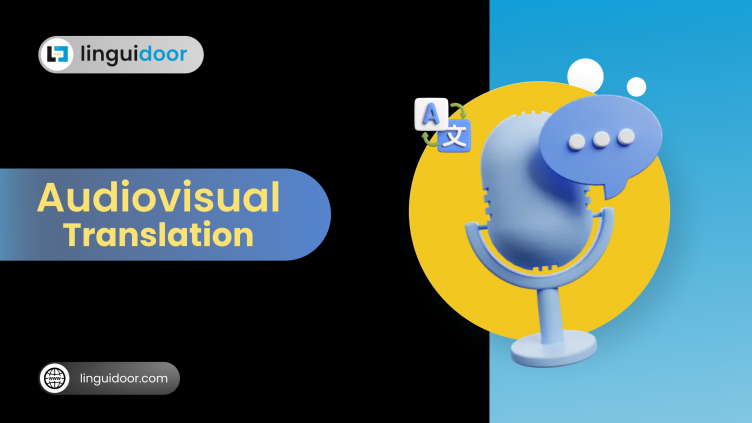Audiovisual Translation: A Key to Global Communication and Accessibility in the Digital Era

Did you know? According to a report, the global video streaming industry is projected to overshoot a value of US$ 554.11 billion by 2032. However, the growth is only of use when all of the consumers get a unified experience. While English is widely adopted, a consumer is only immersed enough when they have the content according to their preferences.
Hence, this exponential growth is a manifestation of the growing need for audio-visual translation to meet the expectations of international audiences. So, let’s understand what AVT is and why it is important.
Audiovisual Translation (AVT) is the process of translating the audio and visual components of media content such as movies, television programs, documentaries, and video games into other languages. It plays a crucial role in:
- Enhancing accessibility: AVT provides the possibility for even those who are not very proficient in the original language to get more diverse content and enjoy it.
- Boosting cultural exchange: The AVT overcomes the language barrier that would otherwise hinder the understanding of thoughts, stories, and perspectives of different cultures.
- Expanding market reach: In the era of AVT, media creators or companies now have access to the global marketplaces and interact with their audience worldwide.
Traditional Audiovisual Translation AVT Methods
There are three traditional methods of AVT:
Image idea: Icons and brief descriptions illustrate traditional AVT methods: subtitling, dubbing, and voice-over, aiding in visual representation for designers.
| Method | Description | Advantages | Disadvantages |
|---|---|---|---|
| Subtitling | Text captions are displayed on the screen, translating spoken dialogue. | Cost-effective, space-efficient, and allows viewers to hear the original language. | Limited space for text, can be distracting, and may not capture cultural nuances. |
| Dubbing | Replacing the original audio with a translated voice-over track. | Creates a more natural viewing experience, easier for viewers who cannot read subtitles. | Can be expensive and time-consuming, may alter the original actors’ performance and emotions. |
| Voice-over | Translating the dialogue and narration into another language while preserving the original audio in the background (often used in documentaries). | Can be cost-effective and versatile, allowing viewers to hear both languages. | May interfere with the original audio, require careful synchronization, and can be distracting. |
Rise of Digital Tech

The advent of digital technologies has made a huge impression on the current AVT environment. Several trends are shaping the future of the industry:
- Machine Translation (MT): MT tools are widely applied to complement human translators as they offer comparatively significant time and cost savings compared to traditional translation methods. Nevertheless, human expertise is still an integral part of the process to ensure quality checking and localization of content to a particular cultural space.
- Crowd-sourced translation: Platforms such as Linguidoor enable companies to connect to a global network of professional translators. The flexibility and affordability offered by such platforms make them suitable for large translation projects.
- Localization: The AVT approach covers not only language translation but also reflects cultural norms and linguistic nuances peculiar to the viewers’ target audience. Such translations include the translation of idioms, humor, and the references that are required to make the message have a deep impact.
Latest Trends in Audiovisual Translation AVT Industry
In response to the novelty and challenges that digital technology presents, AVT has also changed and transformed to cater to the needs and wants of the current media industry and the audience. Some of the new trends in AVT are:
- AI-Powered Translation Solutions: As AI and machine learning technology become more common, we see the spread of AI-based translation machines and platforms. These solutions are capable of providing increased speed, precision, and size of operations, and for this reason, they are more cost-efficient and time-effective.
- Adaptive Localization: The world is getting more and more interconnected and this is the reason for the demand for novel localization approaches that expand translation beyond language. This requires addressing the issues of cultural, social, and regional differences in the contents to make them relevant and resonant to different audiences.
- Interactive Translation Experiences: The interactive translation experience is becoming increasingly popular nowadays, as the users are allowed to interact with the content in a stimulating way. There are multiple types of these experiences, i.e. interactive subtitles, AR translation overlays, and more, which offer a more dynamic and engaging AVT experience.
- Personalized Translation Services: Translation services are being automated and customized to a specific audience. Content is adapted to provide a personalized and user-oriented experience.
Challenges & Opportunities Around Audiovisual Translation
Even with these great achievements, AVT still faces obstacles. Some of them are:
- Multilingualism: Globalization leads to more creative and interesting stories. But it also involves linguistic and cultural issues which should be treated properly and mindfully.
- Interactivity: Interactivity in AVT changes the user into a participant and even an agent who transforms the whole scenario, forming a bond between them. It gives rise to new elements and challenges, which demand a specific type of attention, like user-generated content and adaptive translation.
- Automation: AI and machine learning are used to obtain speed, convenience, and cost-efficiency. It however brings forth quality, reliability, and ethical issues while doing new product development.
However, these challenges also present exciting opportunities:
- Emerging technologies like AI: AI-controlled systems can also contribute to higher translation efficiency and precision, where AVT specialists can be more creative and focused on standard tasks.
- Growing demand for global content: The mounting demand for multilingual content across industries provides a solid platform for the growth of AVT professionals.
Future of Audiovisual Translation AVT

Source
The future of AVT is a season of unending innovation and adaptation. As technology continues to evolve, we can expect to see:
1. Enhanced Machine Translation (MT) Tools leading to:
- MT engines will become adept at handling regional variations, and cultural references, resulting in more accurate and natural-sounding translations.
- Speed and efficiency of translation processes will drastically improve, enabling faster content delivery and wider reach.
2. Automation: Repetitive tasks like caption synchronization and basic edits will be increasingly automated, freeing up human translators to focus on:
- Creative adaptation to resonate with diverse audiences, ensuring cultural sensitivity and maintaining the intended message.
- Overseeing the overall quality of translations, ensuring accuracy, fluency, and adherence to ethical considerations.
3. Personalized and Customized Communication:
- Subtitles and captions that adapt to user needs, such as adjustable reading speed or language options based on user profiles.
- Tailoring content to specific cultural contexts and regional preferences, ensuring relevance and impact for various audiences.
The future of AVT is all about making the world a smaller place, one translated video at a time. By embracing these changes, AVT will continue to be a bridge between cultures, helping people connect and share stories from all over the globe.
Conclusion
Audiovisual translation is a crucial part of the media industry in the digital era since it facilitates global communication and the accessibility of audiovisual content. Audiovisual translation is also a dynamic and varied field where continuous learning and development are demanded. Therefore it is better to opt for such services only through professionals in the field, like Linguidoor, so your content can leverage the most out of the global prospects. The end goal of this is to provide consumers with a personalized experience which our experts can help you achieve.
FAQs:
1. What is the difference between using a professional AVT agency and other options?
Professional organizations provide experienced translators who have a thorough knowledge of both languages and cultural subtleties, together with quality-checking processes that guarantee successful translations. Such organizations also have the best-quality tools trained on the most amount of data to give the most optimal results.
2. Which AVT method would be optimal for me?
The optimal AVT method depends on factors like audience, content, and budget. Subtitling suits content needing original audio preservation. Dubbing suits seamless viewing, ideal for mainstream films. Voice-over is cost-effective and versatile for documentaries. Feel free to reach out to us to learn which method suits you best.
3. How does AVT impact audience engagement and comprehension?
Clear subtitles, natural dubbing, or informative voice-overs improve comprehension, allowing deeper connections with the material. This develops a global audience, promotes understanding of different cultures, and enriches the viewing experience.
4. What are the ethical considerations involved in audiovisual translation?
Ethical considerations in audiovisual translation involve maintaining accuracy, cultural sensitivity, and inclusivity. Translators must uphold fidelity to the original content, avoid stereotypes, and ensure accessibility for all audiences. Confidentiality, consent, and transparency are also crucial for ethical AVT practices.

Made up your mind yet?
Empower your globalization goals today!




